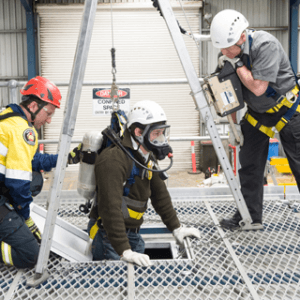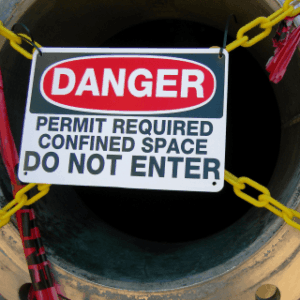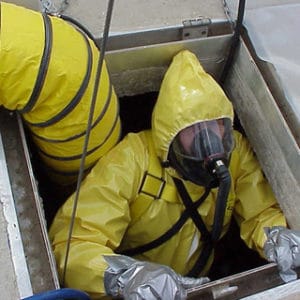Confined-space entry: a risky job best left up to the experts
Without the proper training, appropriate equipment and assistance, entering confined spaces is risky business.
Any water tank, underground fuel tank, aboveground tank, vault, silo, pit or hopper falls into the “confined space” category: it’s big enough for one or more persons to enter and perform work in, but access is limited or restricted, and they should not stay longer than necessary to perform the needed work, according to Mike Byers, CGRS Health & Safety manager. And, depending on the facility’s use, entering a confined space for testing, maintenance or repairs involves any number of risks, including death of the entrant – which is why the many state and federal administrations, including the Occupational Health and Safety Administration (OSHA), strictly regulate it.
The risks associated with entering a confined space in our industry include:
- Fumes-contaminated atmosphere
- Material such as fuel that could engulf the entrant
- An internal configuration that could trap or asphyxiate the entrant
- Other serious safety or health hazards
Byers said hiring confined-space entry experts also saves money: the cost of purchasing the necessary equipment to perform the job, including the gear that protects the entrant from said risks or allows the other staff to get him out of the space quickly, is usually too expensive for most owners/operators to justify. And that cost doesn’t take into account the equipment to perform the needed tests, he added.
In some cases, the local emergency responders require notification if not have their own extensive permitting process for confined-space entries, Byers said. Regardless, informing emergency responders of plans to enter a confined space provides an additional level of security, protection and insurance in case something does go wrong, and the confined-space entry contractor should automatically do it, he said.
When considering a contractor for confined-space entry, you should make sure the contractor has:
- A defined Confined Space Entry Program, including documented annual training per OSHA regulations;
- The proper tools for the job, including retrieval equipment, gas monitors, and respirators with annual training for their use, medical evaluation and annual fit test;
- HAZWOPER (Hazardous Waste Operations and Emergency Response) initial training and annual refresher courses;
- Any other training necessary for the specialized equipment and specific type of entry;
- The appropriate insurance coverage;
- And any warranty/guaranty spelled out in the contract or service agreement before beginning the job.





